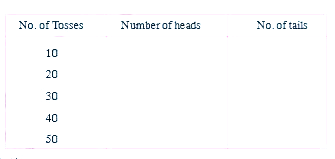Faactorise
(i) 27a3+64b3
(ii) 343y3−1000 using the above results. Solution in Gujrati
The correct Answer is:(i) (3a+4b)(9a2−12ab+16b2)
(ii) (7y−10)(49y2+70y+100)
Step by step video, text & image solution for Faactorise (i) 27a ^(3) + 64 b ^(3) (ii) 343 y ^(3) -1000 using the above results. by Maths experts to help you in doubts & scoring excellent marks in Class 9 exams.
Updated on:21/07/2023Topper's Solved these Questions
- POLYNOMIALS AND FACTORISATION BOOK - NCERT GUJARATICHAPTER - POLYNOMIALS AND FACTORISATION EXERCISE - THINK DISCUSS AND WRITE
2 Videos
- POLYNOMIALS AND FACTORISATION BOOK - NCERT GUJARATICHAPTER - POLYNOMIALS AND FACTORISATION EXERCISE - DO THESE
22 Videos
- POLYNOMIALS AND FACTORISATION BOOK - NCERT GUJARATICHAPTER - POLYNOMIALS AND FACTORISATION EXERCISE - EXERCISE 2.4
10 Videos
- LINES AND ANGLES BOOK - NCERT GUJARATICHAPTER - LINES AND ANGLES EXERCISE - THINK, DISCUSS AND WRITE
1 Video
- PROBABILITY BOOK - NCERT GUJARATICHAPTER - PROBABILITY EXERCISE - DO THIS
3 Videos
Similar Questions
Which of the following expressions are polynomias ? Which are not? Give reasons.
(i)4x2+5x−2
(ii) y2−8
(iii)5
(iv) 2x2+3x−5
(v) √3x2+5y
(vi1x+1(x≠0)
(vii)√x
(viii) 3 xyz
View SolutionWrite three polynomials with variable 'y'
View SolutionDetermine which of the following polynomials has (x+1) as a factor.
(i) x3−x2−x+1
(ii) x4−x3+x2−x+1
(iii) x4+2x3+2x2+x+1
(iv) x3−x2−(3−√3)x+√3
View SolutionWhat is the difference between intersecting lines and concurrent lines ?
View SolutionToss a coin for number of times as shown in the table. And record your findings in the table.

What happens if you keep on increasing the number of tosses.
View SolutionConsider the following reaction,
CH3Br+OH−→CH3OH+Br−
The true statement about the above process is
View SolutionConsider the following reaction, CH_(3)Br+Nu^(-)rarrCH_(3)-Nu+Br^(-) The decreasing order of the rate of the above reaction with Nu^(-) is I. PHO^(-) II. AcO^(-) III. HO^(-) IV. CH_(3)O^(-)
View SolutionThe value of |[a,a+d,a+2d] , [a+d,a+2d,a+3d] , [a+2d,a+3d,a+4d]|+|[b
View SolutionPredict all order of reactivity of the following compounds in dehydrohalogenation. a,. I. CH_(3)CH_(2)CH_(2)CH_(2)Cl II. (CH_(3))_(2)CHCH_(2)Cl III. (CH_(3))_(2)CH - CH_(2)Br IV. CH_(3)CH(Br)CH_(2)CH_(3) V. (CH_(3))_(3) C - Br b. I. CH_(3)CH(Br)CH_(3) II. CH_(3)CH_(2)CH_(2)Br III. (CH_(3))_(2) CH - CH_(2) Br IV. (CH_(3))_(3)C - CH_(2) Br
View Solutionअभिक्रिया CH3Br+Nu−→CH3−Nu+Br−
उपर्युक्त अभिक्रिया की दर का क्रम एक नाभिकस्नेही (Nu−) A से D के लिए है-
[Nu−=(i)PhO−,(ii)AcO−,(iii)HO−,(iv)CH3O−]
View SolutionComplete the following reactions :
(i) CH3−CH2Br+KOH(aqueous)Boil−−→X+Y
(ii) CH3−CH2Br+NH3→X+Y
View SolutionCH_(3)Br+Nu^(-)rarrCH_(3)Nu+Br^(-) The decreasing order of the rate of the above reaction with nucleophiles (Nu^(-)) I to IV is : [Nu^(-)=(I)PhO^(-),(II)AcO^(-),(III)HO^(-),(IV)CH_(3)O^(-)]
View SolutionFaactorise
(i) 27a3+64b3
(ii) 343y3−1000 using the above results.
View SolutionFaactorise
(i) 27a3+64b3
View SolutionFaactorise
(i) 27a3+64b3
(ii) 343y3−1000 using the above results.
View Solution
